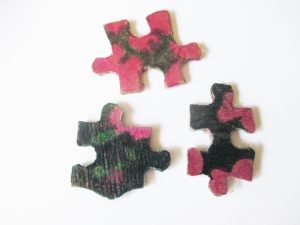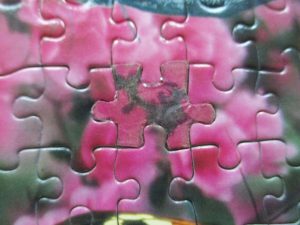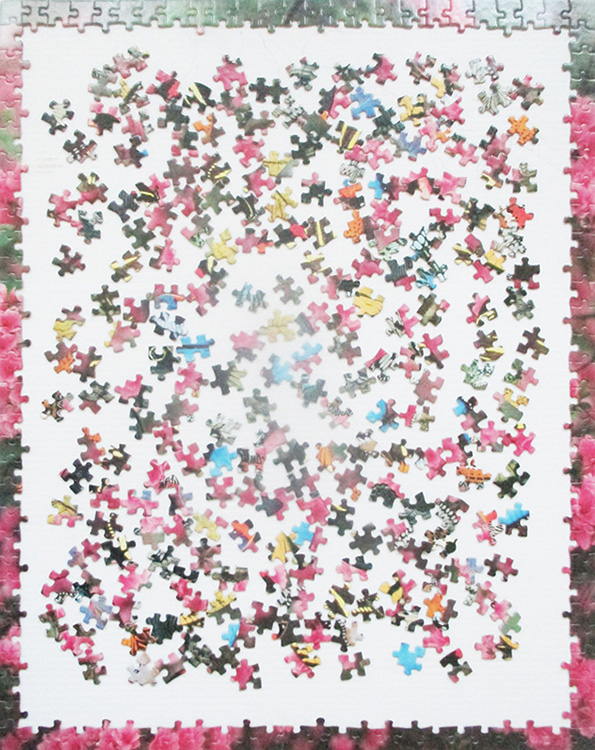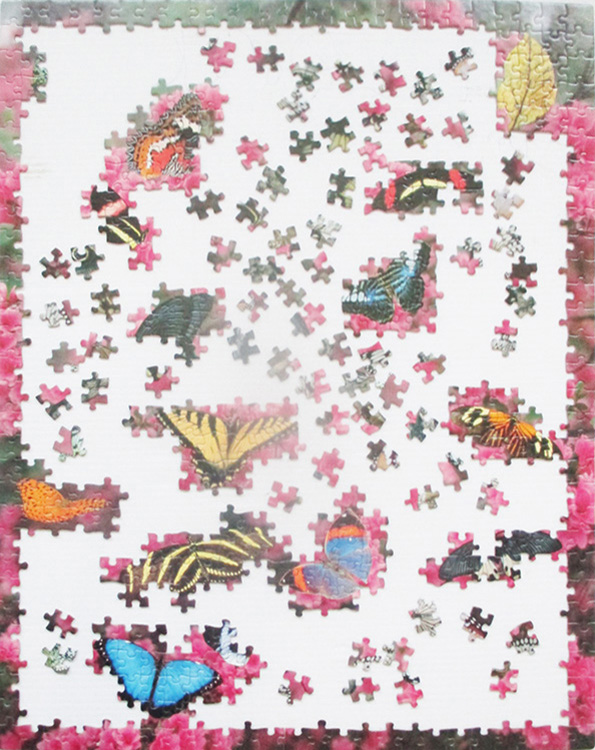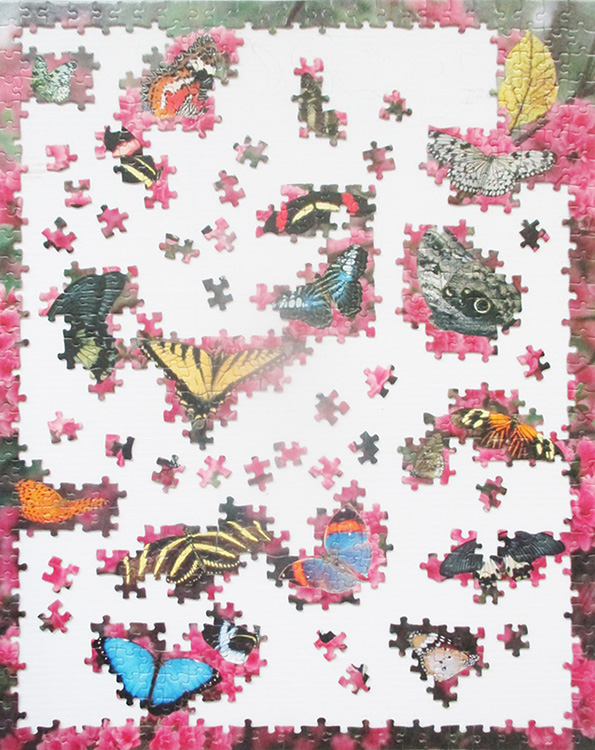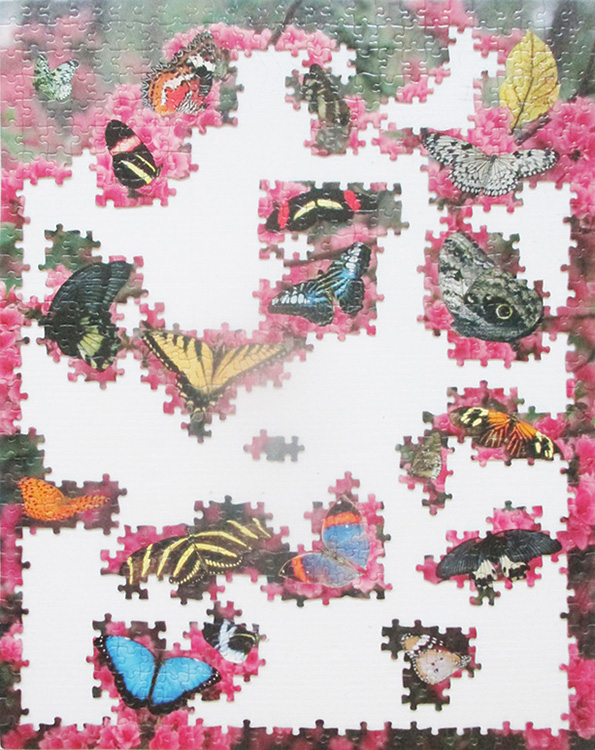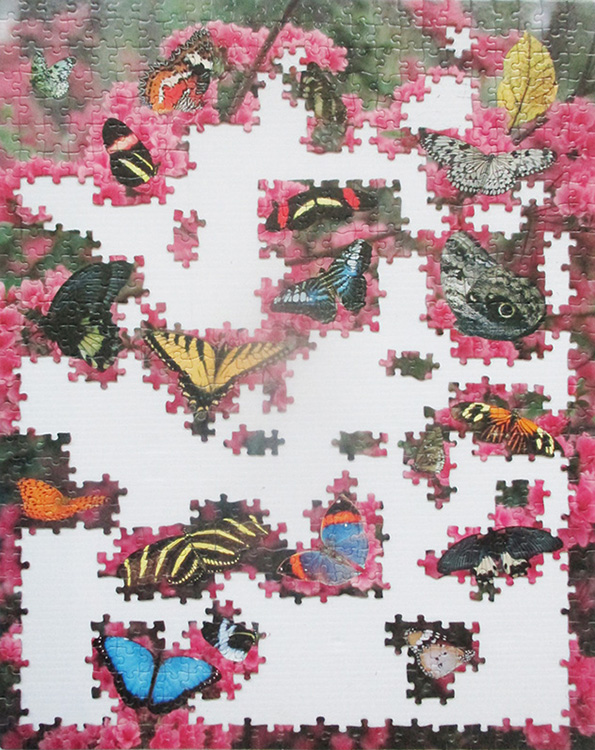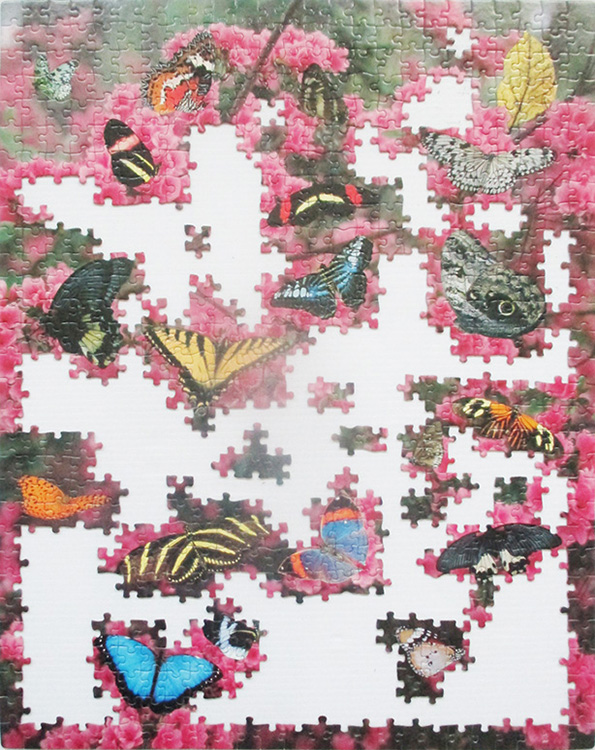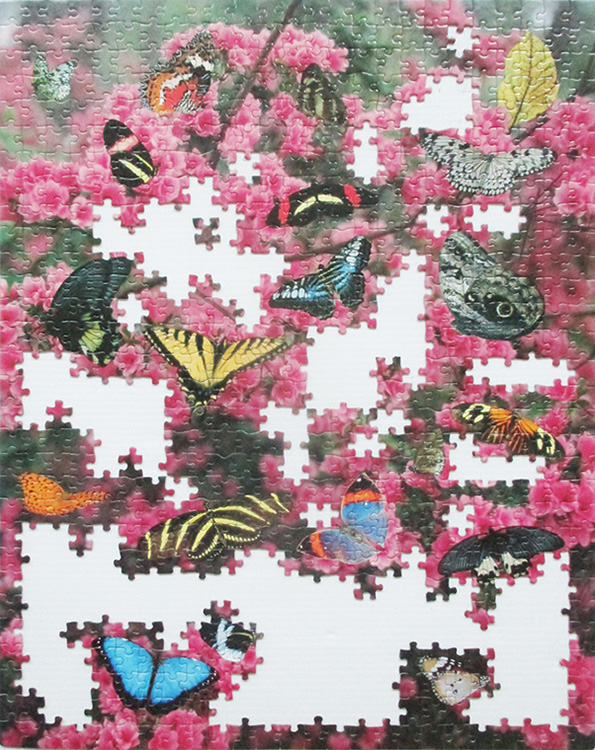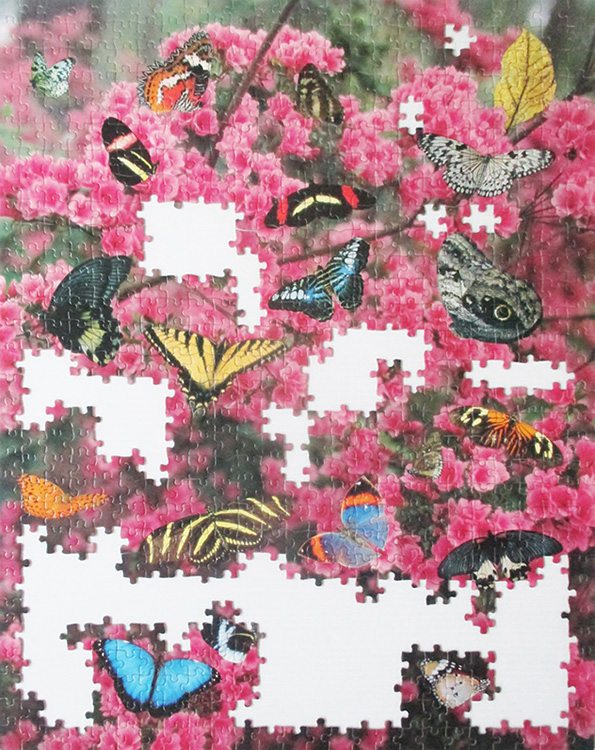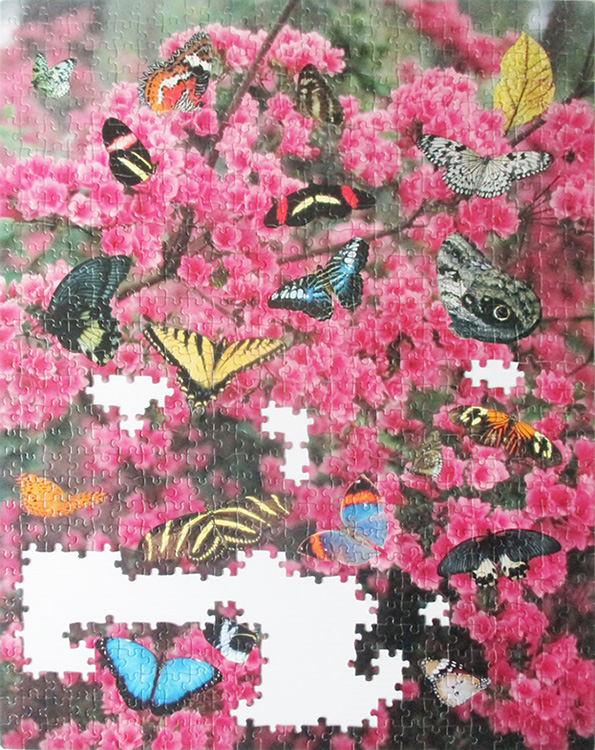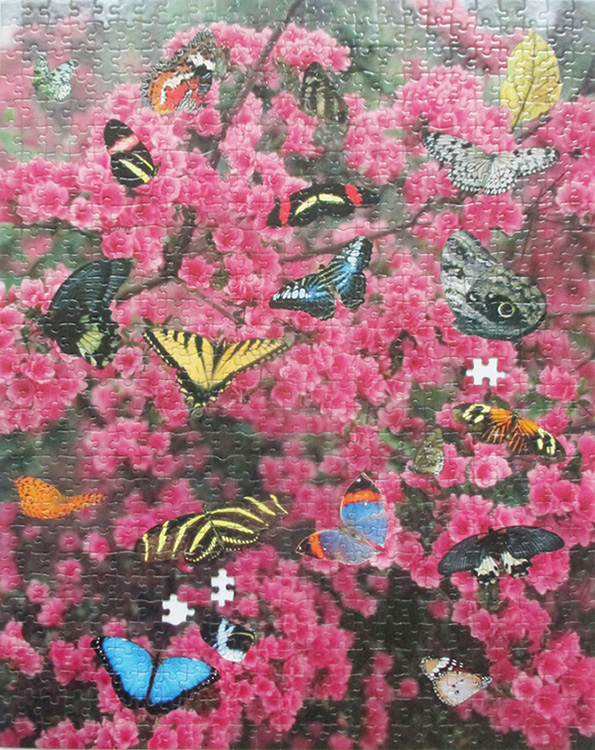While reading
Parasite Rex, I need a mental break once in a while, so in between chapters I read this for something quick, easy, and totally different. Then we had a power outage, so I wrote my thoughts about the book on paper, which got set aside. The week got busy, and I read other things that were more interesting, and completely forgot to post my review here! Ha. Shows you how memorable this was. I know I once tried to read a different version of
Swiss Family Robinson, and didn’t get far because some details were just so unbelievable. Now I’m wondering if even that book was a retelling, because apparently this story has been rewritten and added to over and over, there are many different versions. This one of course, is much abbreviated and simplified, so much that it was for the most part
boring. Even though it’s an adventure and survival story. —
SPOILERS GALORE —
It’s about a family- parents and four boys- who get shipwrecked on an unnamed island. (Wikipedia tells me it was in the East Indies, but the animal life doesn’t seem to match that so who knows). The story opens very abruptly, with the family belowdecks during a storm at sea- there’s never any mention of why they’re even on a ship, or where they’re going. Just there’s a storm, and the captain and crew have already got into lifeboats, leaving this family behind. They survive the storm (never seeing the crew again) and make it to the island, along with some animals off the ship. Two dogs, and later they rescue and bring ashore geese, chickens, pigeons, a cow, goat, donkey and sheep. And I think there was a pig too. Very convenient! They take especially good care of the cow, because of the milk it provides.
The family is very industrious and resourceful and they all get along amazingly well (no arguments or whining from these kids) and don’t flinch at any of the challenges or hardships about surviving on the island. They quickly set up a tent from a piece of sail, take stock of their provisions, bring ammunition and weapons ashore, and go back to the ship several days in a row to salvage more supplies, plus broken wood for building materials. The father even at one point decides to cause an explosion on the wreckage so that it will break up and wash ashore more wood and other pieces they can use.
Soon they move from their tent to a tree with wide, thick horizontal branches that they build a treehouse in. They make a bridge over a stream nearby. They build stairs up inside the hollow tree (after relocating a wild bee nest and keeping some honey). It’s all very cleverly done, with the parents having an astonishing amount of knowledge how to do and make things. From using mathematics and angles on the ground to measure the height of certain points in the tree, to knowing how to process flax to make cloth, how to tan animal hides, how to smoke and salt fish, and so on. They have some food from the ship- and grow grain in an open field, and they also find pineapples, wild potatoes, flax and cotton, a plant (it must have been bayberry) that has waxy berries they use to make candles- just a wide array of very useful plants and of course they know how to harvest, utilize and process everything.
I remember now why I rolled my eyes at the original story – which was written in a response to the overwhelming popularity of
Robinson Crusoe (this family isn’t even named Robinson, it’s just alluding to that other survival story). Apparently the author wrote it to inspire young people with the idea that God would always provide for them, no matter what circumstance or where they ended up. But you have to admit this family had a lot of very specialized knowledge (or did everyone in the 1800’s just know how to build a spiral staircase, skin animals and cure the hide, grow grain and cut and thresh it, etc?) and a lot of lucky fortune- all the stuff on the ship they were able to salvage, all the plants growing nearby that just happened to be so useful.
What threw me off, with the other more complete version I read, likewise this one, was all the wild animals that lived on this island where they probably wouldn’t exist together in nature. If I recall in the other book they were at one point looking on a scene that included kangaroos and penguins among other species, and I just started laughing (except now I realize maybe I shouldn’t have- Australia does have penguins!) This book doesn’t have any kangaroos. They find an onager that hangs around their donkey, so is then caught and tamed. They catch an ostrich and likewise tame it for one of the young boys to ride (not something anyone should do, btw). They also encounter bears, agouti, sharks and salmon. Some other animals I remember from before aren’t mentioned. But- they think they’ve landed in the Americas. Well, South America has agouti, but not ostriches or onagers. Maybe it was rhea, not ostrich that they saw. If it was the East Indies, onagers and bears could be possible, but not the agouti. It just irritates my brain trying to make sense of all this. I want it to fit together realistically, when really I should just enjoy the story. I suppose the original author just threw together a bunch of wildlife he didn’t know much about but they sounded exotic and a place with all of them together would be fantastic!
At the end, an English ship passes by the island, is alerted by gunshots, and lands to assist them. Two of the sons decide to leave and return to civilization, but the parents and other two kids, stay on the island! Even though during the story they had wondered many times if they’d ever see other human faces again, now with the chance in front of them, the adults decided they were so used to life on the island they’d prefer to remain. Well it did sound like paradise. But I’m sorry, it was a very boring read. Maybe in part because of how formal and polite the dialog was- especially the kids towards their parents- even if people used to talk like that, it sounded so stiff and unbelievable. Oh well.
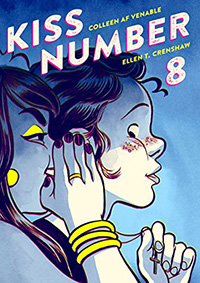


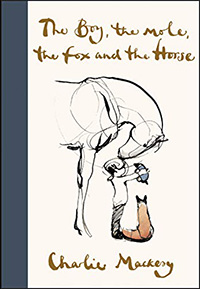

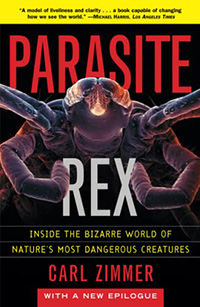
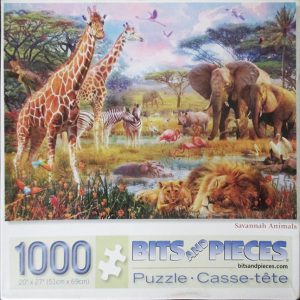 This puzzle was fun. Lots of different colors and visual patterns. Nice, sturdy pieces- a bit too much glare for my taste, but it wasn’t terrible. The random piece cut was full of unique shapes. Plenty that pretended to be edges, but weren’t (not a single one of these is actually an edge piece, though I had them all sorted out for that) but that just adds to the challenge! (And there was one piece on the bottom edge that should have been obvious to pick out from the others, but eluded me until I was a good way into the puzzle)
This puzzle was fun. Lots of different colors and visual patterns. Nice, sturdy pieces- a bit too much glare for my taste, but it wasn’t terrible. The random piece cut was full of unique shapes. Plenty that pretended to be edges, but weren’t (not a single one of these is actually an edge piece, though I had them all sorted out for that) but that just adds to the challenge! (And there was one piece on the bottom edge that should have been obvious to pick out from the others, but eluded me until I was a good way into the puzzle)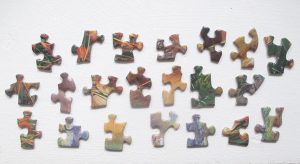
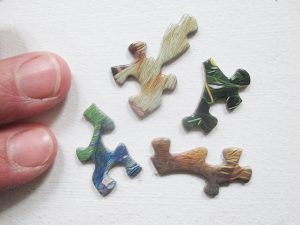
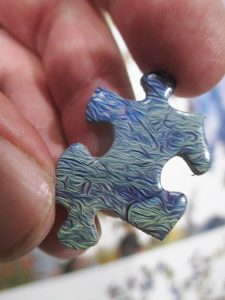
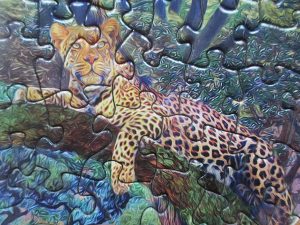
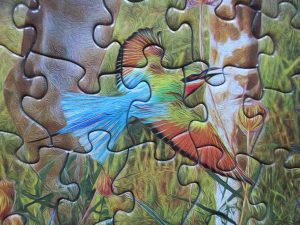
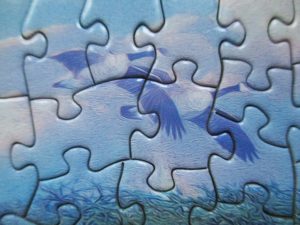
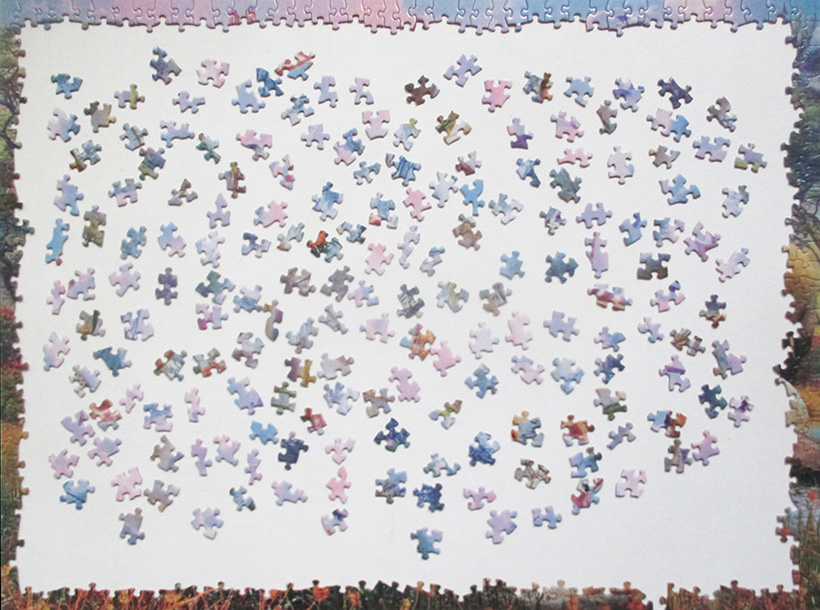
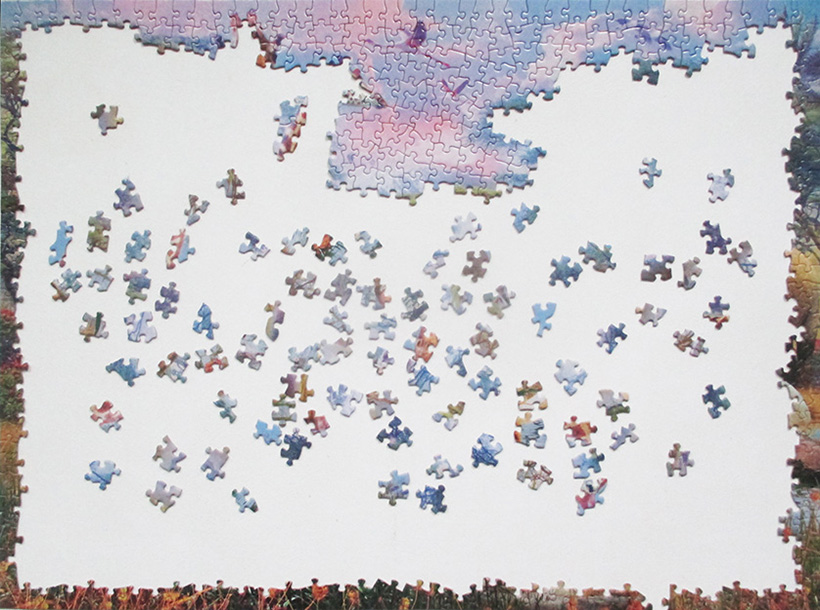



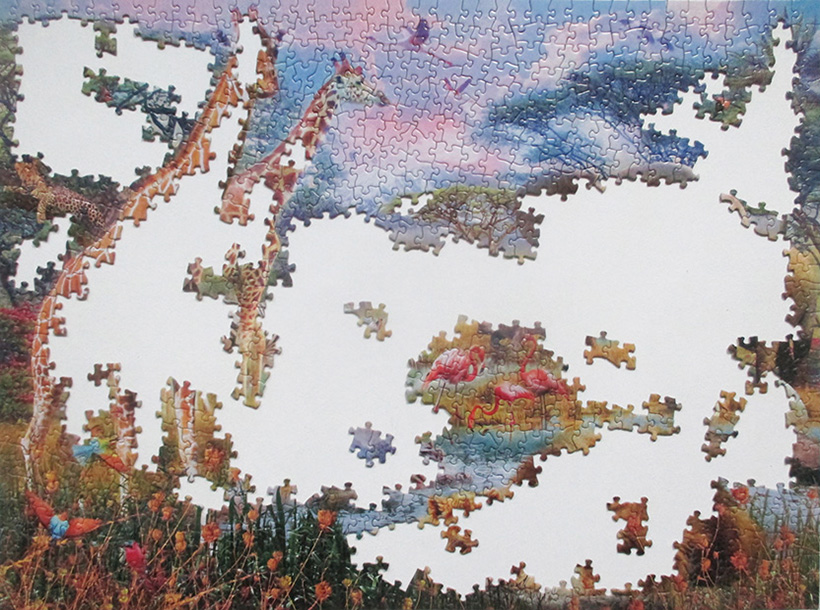
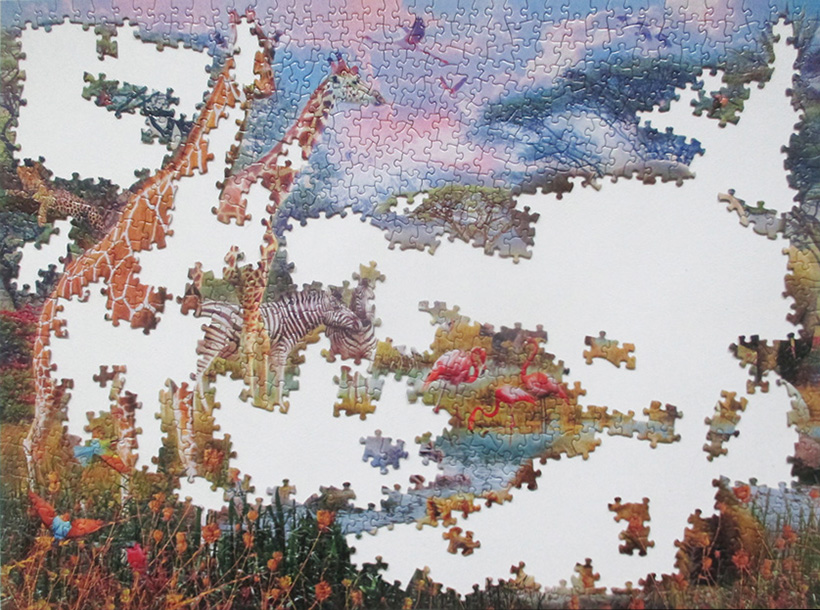

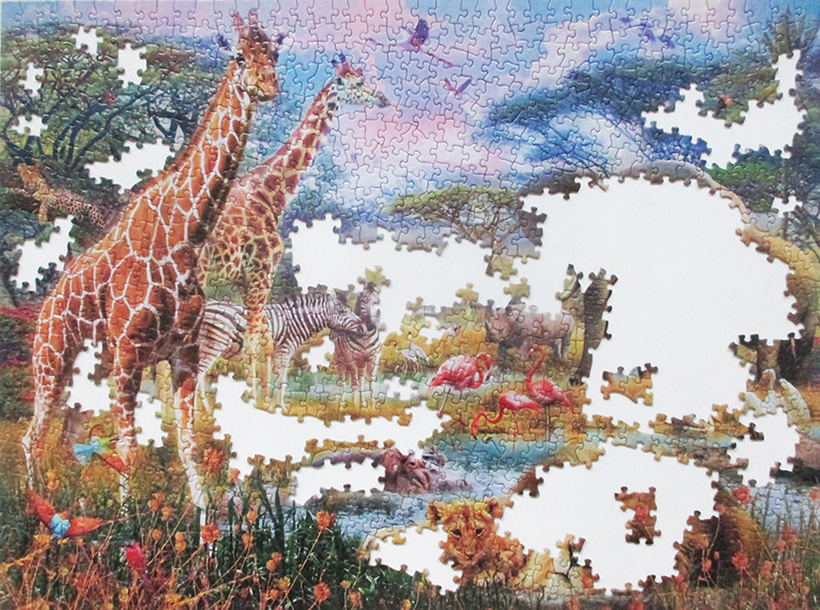
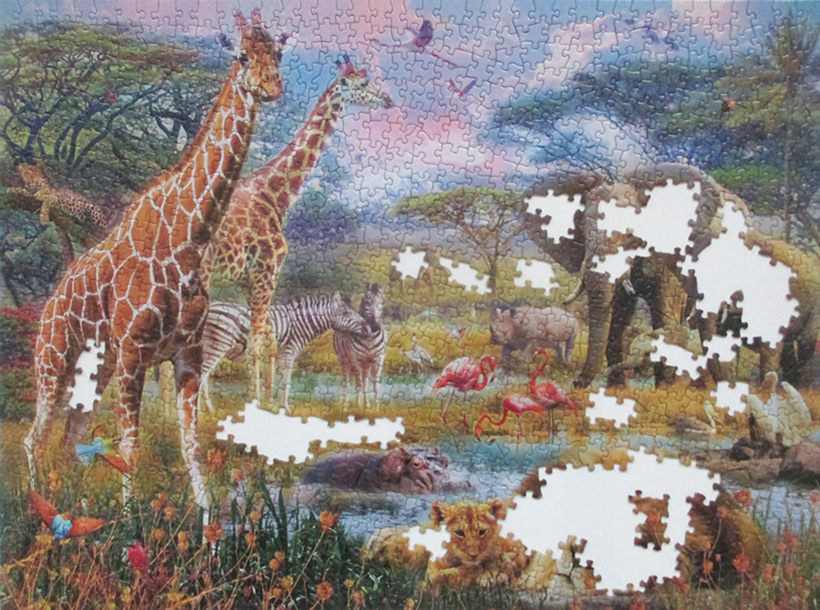
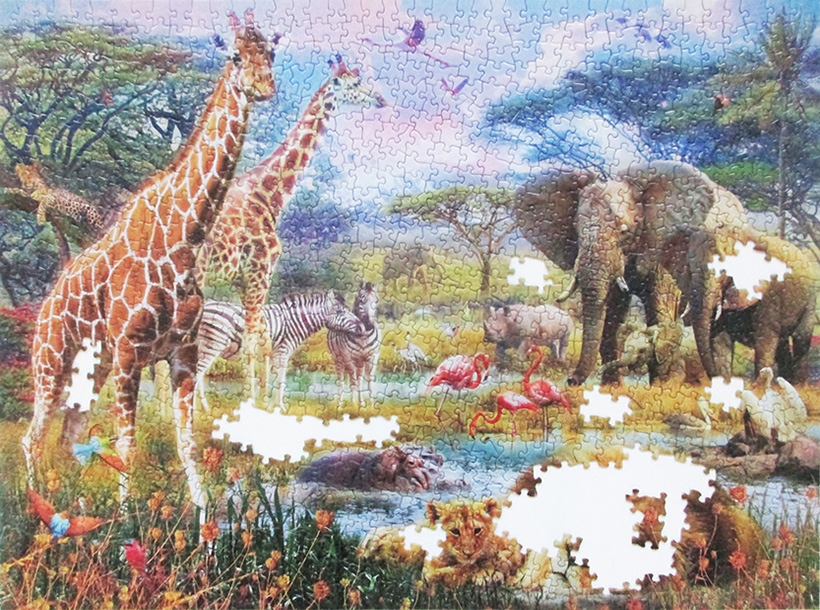
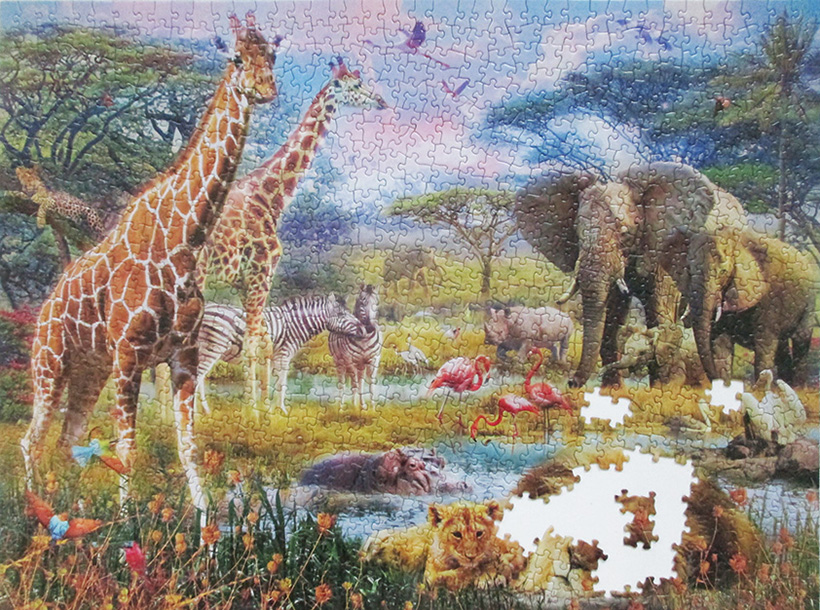
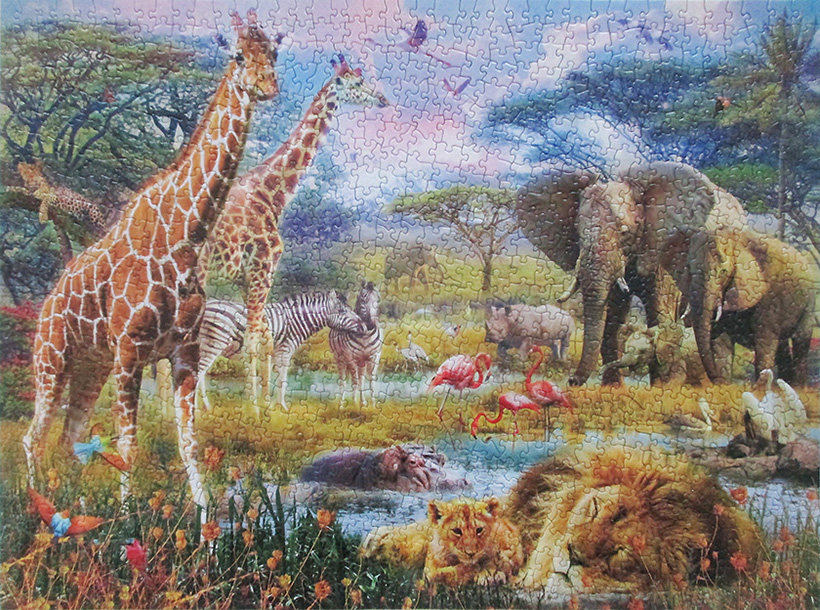
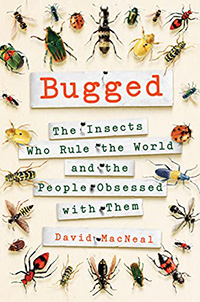
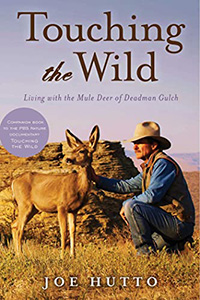
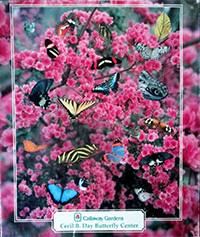 This was one of the more difficult 750-piece puzzles I’ve done. All those pink azaleas in the background was very reminiscent of
This was one of the more difficult 750-piece puzzles I’ve done. All those pink azaleas in the background was very reminiscent of 